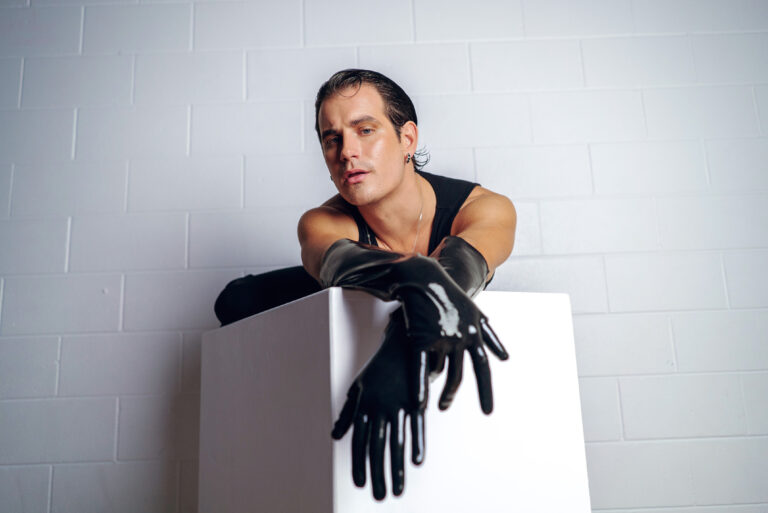It wasn’t so long ago that the idea of screening dance students evoked images of grim-faced instructors with tape measures weeding out the unacceptable. But as part of a dance wellness program, a screen using contemporary methods developed by the burgeoning dance medicine field can lead to more effective training, better overall levels of conditioning and health and, perhaps most importantly, the prevention of injury.
Screening has been common in sports for years, but with the rise of dance science, physical therapists have taken the concept into the dance studio. Currently, professional dance companies and some studios have begun instituting wellness programs and the screens that are part of them. And a dance screen can be particularly effective in higher ed, where demanding class loads and academic scheduling make the time available for conditioning and technique training particularly precious.
So what exactly is involved in a dance screen, and how can you start one at your school or studio? Take a look at how one college instituted a dance screen to find out what you’ll need, who to turn to for assistance and how to follow up on your results.
Why Do a Screen?
Karen Potter and Gary Galbraith started dance screens as part of the Dancer Wellness Program at Cleveland’s Case Western Reserve University six years ago with the idea of helping students develop and advance. “If we are going to push the technique and we are going to push [dancers] hard, we’ve got to implement a system to help support them,” says Galbraith, who is also an associate professor of dance and artistic director of Case’s Mather Dance Center. “[The dance screen] is just a means to make [their training] that much stronger, [more] protected and informed.”
A barebones dance screen often includes a medical history; a basic technique evaluation; a nutrition questionnaire; assessments of strength, flexibility, postural alignment and cardiovascular fitness. Case’s screen covers aerobic fitness, balance, body fat, general flexibility, flexibility and laxity, strength and structural analysis.
At Case, Potter, Galbraith, physical therapist Chad Fortun and a team of six volunteers hold the screen, which is mandatory for dance majors and graduate students and voluntary for dance minors, once at the beginning of each year. Approximately 20 students are screened. “Each dancer can get through it in about an hour,” says Potter.
The assessments can save both dancers and teachers time and energy by identifying technical issues—for example, a dancer’s inability to maintain turnout when coming down from a jump—and their possible causes, such as a specific muscular weakness. In the instance described above, by correlating data from the screen, it is possible to understand that a weakness in the external rotators, rather than inattention, may be behind the problem. Custom-tailored exercises can then be created to correct the imbalance. The same is true in terms of identifying weaknesses that can lead to injury. The screening process can thus give students perspective on how to better fulfill their goals—and teachers a baseline resource that can be referenced throughout the year to measure progress.
Who You’ll Need
Colleges and universities, with their often well-funded athletics departments, have a distinct advantage over even professional dance companies when it comes to the availability of potential expert volunteers.
Galbraith explains that Case’s “sports physical therapists were very interested in volunteering their time just for the opportunity of observing a highly specialized group (dancers) whom they would not necessarily have access to.” He adds that for physical therapists, doing a dance screen is one kind of professional development that can expand their credentials. “So if you present it that way,” he points out, “it makes participating a very positive growth experience for them.”
It also makes sense to turn to faculty members who are doing research in dance medicine, dance science or kinesiology and may be interested in expanding the applications of that knowledge. Of course, it can be hard to add anything to an already full teaching schedule. But one way to work around scheduling conflicts is to help potential volunteers petition the school administration for teaching credit for the time they spend on a dance screen.
Potter recalls that she and Marshall Hagins, with whom she developed a similar dance wellness program at New York’s Long Island University, were given a break for establishing the program. “Once [our project] was approved, we got a teaching reduction, meaning we taught one less class to run the dance wellness program,” she explains.
Where You Can Hold It
Another variable that can involve expense is location. When Potter was establishing the program at Case, she first looked for a clinic where the equipment for measurement and calibration was at hand. Since then, she’s found that this type of setting is no longer necessary. New models for field assessments—that is, testing done outside of a clinic—continue to be developed.
At the International Association of Dance Medicine and Science conference in Stockholm, Sweden, in November 2005, Mathew Wyon of the University of Wolverhampton and Emma Redding of Laban in London demonstrated an aerobic fitness test that uses simple dance movements at increasing levels of complexity and velocity. The movement sequence, which includes running, hopping, jumping and rapid shifts in direction and rhythm, is appropriate for beginners as well as advanced dancers.The test took place in a dance studio, and while heart rate monitors are suggested, participants in Stockholm self-tested their heart rates using the low-tech method of placing a finger on a pulse point. For an actual screen, however, accurate gathering and recording of data is imperative.
The Follow-Through
Once the testing is completed comes the hard part: analyzing the results and comparing them to norms drawn from established resesarch. “The way our program is written,” says Potter, “there is a correlation between what a dance teacher will see as a good demi plié and the maintenance of external rotation of the femur, as well as pronation or inversion.”
The analysis and correlation of the information is where the full value of the screen is gained. Data from a dance screen can be used not only for abstract research, but also as part of a wellness program, where the results can be put to use to enhance the well-being and performance of an individual student.
But Galbraith stresses that results must be kept in perspective. “Dancers can get into that perfectionist thing and really get upset about any one thing,” he says. “They have to look at the [whole] picture.” To help with that, each Case dancer meets with a member of the Dancer Wellness Program, who then helps to customize a cross-training regimen that reflects findings from the screen. Follow-ups are done on an as-needed basis throughout the year.
Using the Web
A significant part of the program at Case is its interactive web component. Once the testing is completed, the results are posted for each participant via a secure login that only the individual dancer and the dancer’s instructor can use.
The information is presented in a user-friendly form that enables the student to understand the results and, by using online resources, tackle any problems. For example, for the hypothetical student mentioned earlier whose technique screen revealed a problem holding turnout, links on the website will lead the student to an anatomical diagram of the muscle, the muscle’s action (by way of a biomechanical video) and suggestions for exercises that will help correct the imbalance.
The web aspect of Case’s wellness program is a perfect match for today’s computer-literate student body. “We recently added a feature where the students could collect ‘My Exercises,’” says Potter. “This new feature is wonderful, because it allows them to create their own regimen. It’s like shopping on the internet.”
To see how the program runs, go to http://dancewellness.case.edu and click on “Example tour” for a quick overview of the site’s features. The Case model is now also in place at Western Michigan University at Kalamazoo, and Galbraith is also working closely with other institutions interested in using the website.
In the end, both Potter and Galbraith acknowledge that it’s important to be vigilant about how dancers perceive the purposes of the screen. As part of an overall wellness program, it should be seen as something that helps dancers achieve their goals, not determine suitability. A dance screen is just a tool. “It is really about the dance,” says Galbraith. “As far as we’re concerned, it’s about the art.” DT
Virginia Johnson is the Editor of Pointe magazine.



